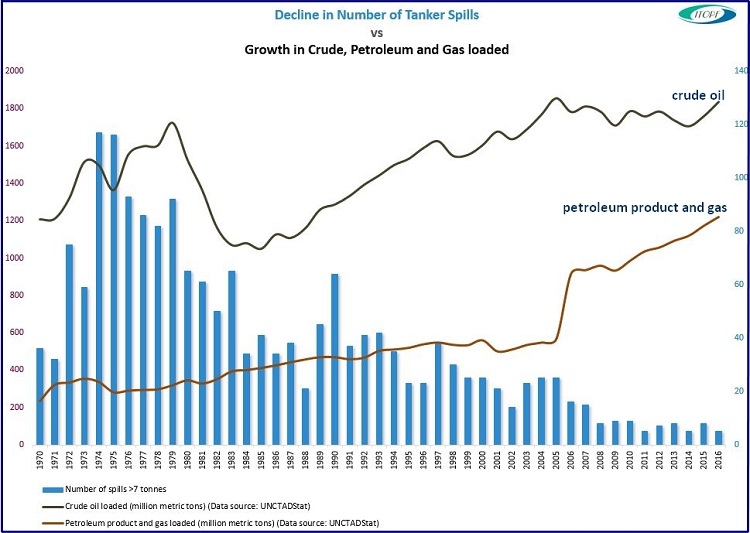Ship Escorting - A Changing Mission
Ships are escorted in several ports around the world, for instance in the U.S., Europe, Australia and Japan. Escorting can be carried out in several ways, with all types of tugs at low speeds and with purpose built tugs at higher speeds. It is mainly the latter that is specifically called escorting.
What is escorting? According to the book Tug Use in Port the objective s of escorting are:
1. To ensure a safe passage through the approach channel and apply steering and braking forces to a disabled vessel by escorting tugs and to keep it afloat, or limit the impact of collision or grounding if they unfortunately happen.
2. To reduce the risk of pollution in port areas and port approaches due to groundings or collisions caused by technical or human failures on board a tanker.
The escorting tugs should be able to control the ship over a relatively large speed range, let us say from 10 knots down to zero.
Escorting has been carried out for almost 45 years. Specific attention to the escorting of oil tankers started in the U.S. around 1975. Towing company Foss Maritime was mandated to escort tankers by the State of Washington that year. In Norway, escorting became mandatory in 1979 after the accident with the gas tanker Humboldt in the narrow approach channel to Porsgrunn on Norway’s east coast in March 1979.
A number of years later, on March 24, 1989, the Exxon Valdez ran aground during her outgoing passage of the Valdez Arm, Alaska, resulting in a huge oil spill. As a consequence, renewed attention was paid to escorting loaded tankers in the U.S.
Over the last 10 – 15 years, changes have taken place regarding the risks that caused escorting to be started, in the type and number of ships being escorted and the way escorting is carried out. What has changed since, let us say, 2010:
• The phasing out of single hull tankers. The final phasing-out date of single hull tankers was 2010. So, it is all double hull tankers now (with some exemptions under conditions of the flag state administration).
• According to ITOPF, the number of spills has decreased enormously, while there is still a significant growth in crude, petroleum and gas loaded.
• Risk of an LNG spill is very low. LNG carriers have multiple containment walls and insulation with eight feet between the hull and the cargo, making them very robust. No large LNG spill has been reported.

This means that the risk of pollution in port areas and port approaches due to groundings or collisions has become very low, and for that reason the need for escorting has become very low as well.
What can be seen now is that the escorting of large gas carriers has increased considerably. Escorting of very large bulk carriers has started to take place, as is the case in Port Hedland, and in at least one port very large container vessels are escorted.
This means that the main purpose of escorting has become only the above mentioned objective 2, viz. to ensure a safe passage through the approach channel and apply steering and braking forces if needed. In other words, to keep the ship afloat and fairways to the ports open. Whether this is needed for a port or fairway depends on investigation of accidents that have happened and/or the outcome of risk assessments.
Further developments are:

that matters most
Get the latest maritime news delivered to your inbox daily.
• Escorting of LNG tankers in particular in cold areas has increased, requiring special designed tugs.
• Escorting with two tugs, so-called dual-escorting, has emerged. Dual-escorting requires special attention so that the forces generated in the towline by the tug are not too large for a ship’s deck equipment. The same applies for escorting of bulk carriers and container vessels. Bulk carriers and container vessels do not need to comply with the requirements for emergency towing equipment which can be used for connecting towlines too.
This and much more, even autonomous tugs, is discussed in the new third edition of the book Tug Use in Port. The large-format hardback book is illustrated with a wealth of detailed diagrams, graphics and photographs. The book can be ordered at a price of €45 at The ABR Company Limited.
The opinions expressed herein are the author's and not necessarily those of The Maritime Executive.
